Plato's Cave: Gestalt Examples
Gestalt Examples of Perceptual Phenomena
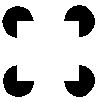
The Kanizsa Figure
The Kanizsa figure generates a global percept of an occluding figure
from four "pac-man" figures. A single pac-man creates no such figure,
and it is only the globally consistent grouping of the four pac-men
that creates the illusion. Local processing therefore cannot detect
the parts of this illusory figure.
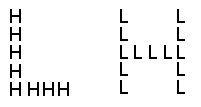
The Global Precedence Effect
Psychophysical studies have shown that when presented with local /
global letter patterns like these, subjects more readily recognize the
global letter than the local one; i.e. their performance is faster and
more accurate when the task involves reporting the global letter than
the local letter.

The Glass Pattern
The Glass Pattern is created by generating a pattern of random dots,
printing that pattern, then overprinting it with another copy of the
pattern rotated through a small angle. This creates a percept of a
globally consistent concentric arrangement for which there is no
specific local evidence.
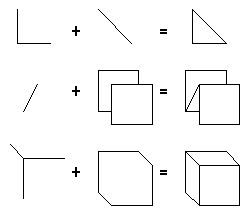
Visual Search
When the two elements on the left are combined as shown, they create a
figure which is fundamentally different from the elements of which it
is composed. Besides just appearing different, psychophysical studies
have shown that the combined figures are perceived in parallel when
hidden amongst distractors in a visual search task, whereas control
features composed of the same elements are perceived serially. This
suggests that the three-dimensional percept is a low-level
pre-attentive pheonomenon, rather than a high-level cognitive
phenomenon.
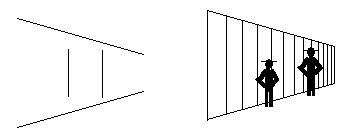
The Ponzo Illusion
In the Ponzo illusion the two vertical lines appear to have different
lengths, due to the presence of the converging lines. This percept
can be explained by a perspective interpretation, where the converging
lines suggest that the line on the right is farther away, and a
farther object that subtends the same visual angle must actually be
larger, as shown in the picture on the right. It is interesting that
this illusion (the one on the left) generates the illusory size
disparity without generating a percept of depth, although the
illusion only makes sense when considered in depth. This suggests
that depth perception is not a high-level cognitive phenomenon, but a
low-level preattentive one.
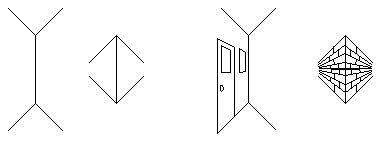
The Mueller / Lyer Illusion
A similar phenomenon is observed in the Mueller/Lyer illusion where
the vertical lines which are of the same length appear to be of
different lengths. Again this illusion makes sense in a spatial
context, because the line which is made to appear farther in depth
becomes perceptually larger, while the one that is made to appear
closer in depth becomes smaller. Again, this depth effect is
pre-attentive and unconscious, thus ruling out a cognitive
explanation.
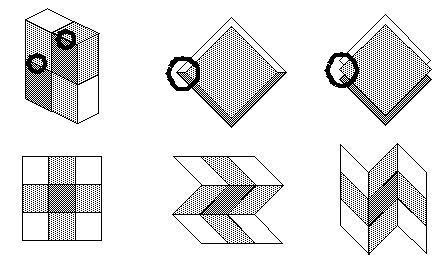
Adelson's Illusions
Adelson presents a number of interesting depth percepts. In the first
one (top left) the two circled edges are locally identical,
although one is perceived as a form edge with no change in
reflectance, while the other appears as a reflectance edge with no
form edge.
In the next illusion (top center & top right) these two figures are
identical except for a small difference at the circled corner. This
local difference however propagates throughout the entire figure,
generating a completely different percept of depth.
The last example (bottom row) shows how three figures which are
topologically identical generate completely different spatial
percepts, with form edges and illuminance edges interchanging in
response to subtle differences in the global configuration.
All of the above examples defy explanation by a reductionist model
which builds up the global percept by assembling the local elements,
because these examples show that identical local elements can lead to
very different percepts, i.e. the local interpretation takes into
account the global configuration.
Return to argument
Return to Steve Lehar







